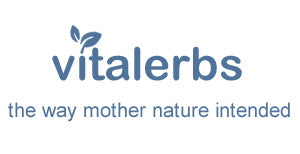Ginger is a milder stimulant than Cayenne. It goes from the capillaries, through the venous structure, to the heart and back again. It is more diffusive than Cayenne. A perennial root, which creeps and increases underground in tubular joints. It sends up from its roots, in the spring, a green reed-like stalk with narrow lanceolate leaves about 2 feet high, which die down annually. The flowering stalk rises directly from the root, ending in an oblong scallop spike. From each spike a white or yellow blossom grows. It is indigenous to tropical Asia and cultivated in tropical areas.
UPC: 084783006039.
Origin(s): China, Ecuador, India, Peru, United States.
Latin Name(s): Zingiber officinale.
Also known as: Shunthi.
Plant Part(s) Used: Root.
Appearance: Medium beige, yellow, tan.
Aroma: Pungent.
Taste: Spicy, hot.
GMO Status: Non-GMO.
Allergen: None.
Additives: Free of any additives or preservatives.
Applications / Preparations: Can be put into capsules, teas, soups, curries, spices, breads, cakes, cookies or infused as an herbal extract. For cosmetic use can be put in a poultice, soaps, bath salts, salves, body scrubs, lotions or essential oil. For decorative use add to dried or simmering potpourri blends.
Storage: Store in a sealed container in a cool, dry place.
Shelf Life: It is very difficult to pin down an exact expiration date for most single herbs as they do not really expire, they lose potency or strength over time but will still have value. Unlike synthetic material or drugs, herbs can contain many constituents that contribute to their medicinal effects. Even if when we know what the active constituents are, there are often many of them in a single herb, each with different rates of degradation. Some herbs lose their effect more easily. Other herbs that possess more stable compounds such as alkaloids or steroids will last much longer.
A huge part of the degradation rate of herbs depends also on the storage conditions of the herb, & even on the quality of the herb before storage – how it was grown, harvested, dried & processed. If the product is left in hot places or open to sunlight then it will degrade much quicker than if it was stored in cool, dry place & sealed tightly.
A good rule of thumb is that herbs should be stored no longer than 2-3 years but many herbs will have great strength much longer than that. To determine if a an herb is still good you can check the appearance & aroma. Herbs that are no longer acceptable will have lost much of its vibrant color & will instead appear dull & faded. The bigger key though is to smell the raw materials to see if the potent aroma is still present.
Warning: None known.




